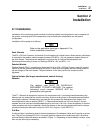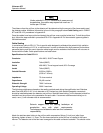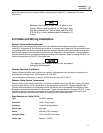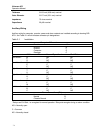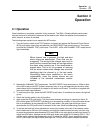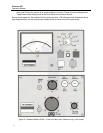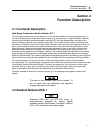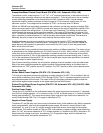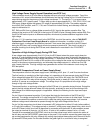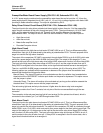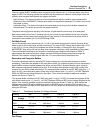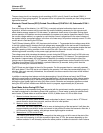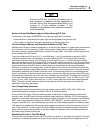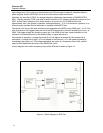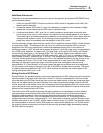
Victoreen 875
Operators Manual
4-2
PreamplifierIMeter Printed Circuit Board (P/N 876A-1-86, Schematic 876A-1-3E)
The detector current, measuring from 7 x 10
-11
to 7 x 10
-4
amperes respectively, at the bottom and top of
the reading range, enters the readout on rear panel connector J1. From the rear panel, the ion chamber
current enters the preamplifier circuit through terminal J302. It passes to U301, a seven-decade
logarithmic amplifier, where it produces an output voltage of 5 V for minimum currents and -2.6 V for
maximum currents. This voltage can be monitored at TP501, on the relay driver PC Board.
Q301A and Q301B have their bases connected to their collectors, so that they operate as diodes. Q301
limits over-range inputs to U301. Q302A is a lower-level clamp on the input to logarithmic amplifier U301,
keeping the current from falling below 1 % of the lower limit of sensitivity. This limiting of the low level
current speeds the response of the logarithmic amplifier. The output of U301appears on terminal 13 of
J301. This terminal is connected to terminal 13 of J103 on the motherboard by a ribbon cable. From this
point, connection is made to terminal 14, J106 of the relay driver printed circuit board. This terminal is
effectively the point of input to the meter circuit and high and alert alarm circuits.
Amplifier and meter circuits can be tested by turning the function switch to TEST and depressing the
CHANNEL TEST push button on the front panel. This applies 15 volts to a circuit of which Q302B is a
series element; the purpose is to generate an input current for U301 (at pin 2) such that panel meter
M401 will be driven full scale.
Panel meter M401 may be switched into anyone of six positions of different sensitivity. The meter current
is determined by the voltage applied to pin 10 of U401 from pin 3 of J401. U401 is driven in turn by U501
of the relay driver printed circuit board. Connection is made from terminal 12 of the relay driver printed
circuit board to terminal 3, J401 of the preamplifier metering printed circuit board through pins 11 and 14,
J101 of the switchboard (drawing 876-1-3J) so that the signal path may be interrupted when it is desired
to use the meter for alarm setpoint checks.
One of the six sensitivity positions, the ALL position, displays all seven decades on the red meter scale.
Each of the other positions expands the scale to achieve a three-decade display on the black scale. In
addition there is a TEST position and an OFF position. The TEST position is also a seven-decade meter.
Power Supplies
Mother Board Power Supplies (P/N 876-1-78, Schematic 876-1-3A)
T101 acts as a step down transformer producing an output voltage of 24 VDC. This is rectified in the full-
wave rectifier consisting of four diodes, CR101 through CR104. The 0.1 microfarad capacitors on the AC
input suppress spikes and limit noise. The output of this 24-volt supply provides the power to both the
positive and negative power supplies on the power supply printed circuit board.
Printed Circuit Board Power Supplies (P/N 876-1-89, Schematic 876-1-3C) (P/N 876-1-89A,
Schematic 876-1-93A)
Positive Power Supply
Twenty-four (24) V power from the motherboard enters the power supply board on terminal 1. Integrated
circuit U2 is a voltage regulator; +15 V comes out of pin 2 of U2. A second supply of +14 volts is provided
through pass element Q1. This output serves relays, lights, and other high current circuit elements. It is
current-limited through R29. The 14 V supply is monitored at TP3.
Negative Power Supply
Transistors Q7 and Q8 make up a free-running multivibrator with a 9 kHz repetition rate, which is powered
by the unregulated 24 volts from the motherboard power supply. Q6 acts as a current limiter for this
multivibrator. U1, pins 8, 9, and 10, and Q5 accept its output and act as a driver stage for the rectifier
which follows. This rectifier consists of CR4 and CR5, and produces a negative voltage, which should be
about -21 VAC, and can be measured at TP5. Voltage regulator U1 (located on the 876-1-89A add-on PC
board) takes this voltage as an input, and delivers a -10 V regulated voltage, which is obtained from
terminal K of the board, and can be monitored at TP4.




